Will a Cycleway Really Run Through the West of Chichester Development County Park Dog Walking Area?
The answer to this question depends on what might reasonably be called a shared use cycleway!
The provision of a shared use path within the dog walking area is frequently refereed to in CDC planning committee meetings as evidence that needs of cyclists have been addressed.
However, ChiCycle consider routes through the dog walking area unsuitable for cycling because the plans fail to meet any recognised standard for shared use paths.
Linden Miller developers also acknowledge the area is impractical for general cycling so it is unclear why council officers still insist on considering it part of the developments cycle strategy.
A list of the County Park Dog Walking area cycle path inadequacies are listed below.
- The dog walking area has access restricted to cyclists by Sprung Gates at every access/egress location.
DfT Manual For Streets (page 42) States that:4.2.4
Pedestrians and cyclists should
generally be accommodated on streets rather
than routes segregated from motor traffic. Being
seen by drivers, residents and other users affords
a greater sense of security. However, short
pedestrian and cycle-only links are generally
acceptable if designed well. Regardless of
length, all such routes in built-up areas, away
from the carriageway, should be barrier-free and
overlooked by buildings. Narrow routes hemmed
in by tall barriers should be avoided as they can
feel claustrophobic and less secure for users.This arrangement also fails to follow recommendations in DfT Cycle Infrastructure Design LTN 2/08 Section 8.14 (page 48). Clips from agreed plans illustrate this issue and are shown below.
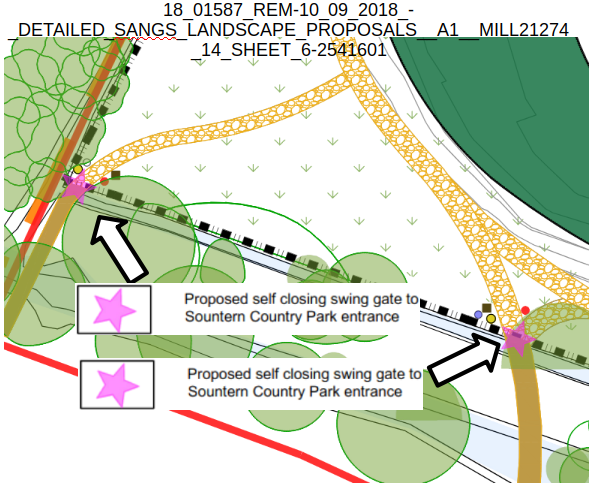
Dog walking area surrounded by sprung gates preventing use as cycle route 
Cycle access with Centurion Way prevented by Sprung Gate 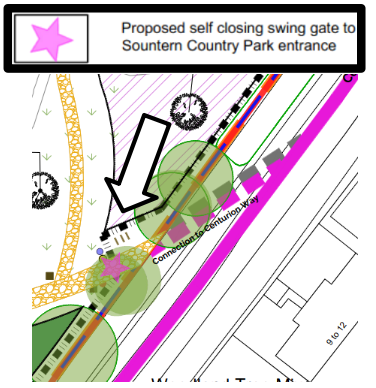
Another access location blocks cyclists at Centurion Way 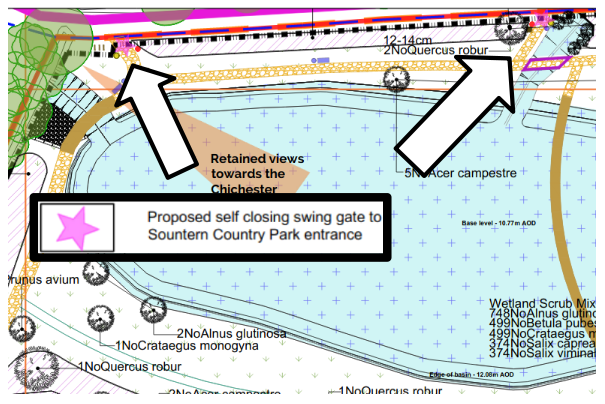
Cycle access at Newlands Lane Prevented by Sprung Gates - Boardwalks and Bridges shown on the County Park Dog Walking area plans are significantly below minimum effective widths required by DfT for shared use paths. This meets neither standard DfT Cycle Infrastructure Design LTN 2/08 section 8.5 (page 43) nor DfT Shared Use Routes for Pedestrians and Cyclists (LTN 1/12) section 7.35 (page 41). If the pathways are bounded by vertical features of over 60 cm, such as vertical drops at the path edges or hand railings at bridges, then the minimum acceptable (actual) width will be 4 metres. All such sections of pathways detailed in plans show actual widths varying from 2 to 3 metres.
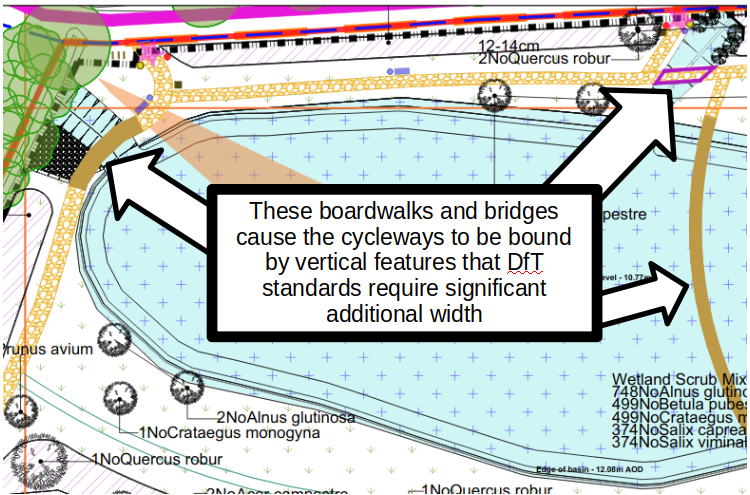
Boardwalks and Bridges Significantly Below DfT Shared Use Path Width Minimum Requirements 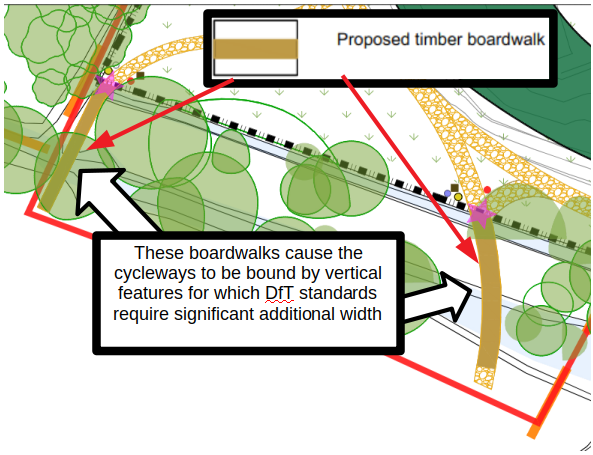
Boardwalks Significantly Below DfT Shared Use Path Width Minimum Requirements DfT Shared Use Routes for Pedestrians and Cyclists (LTN 1/12) requires that shared use paths provide additional width wherever a path is bounded by vertical features.

Table 7.4 Additional clearances to maintain effective widths for cyclists
Conclusion
Although it may be possible to get a bicycle into the dog walking area and then back out on the other side, it is hard to understand how this might be either a convenient or appealing thing to do. The developers explain in their Phase 1 cycling strategy that cyclists will be expected to cycle very slowly because of all the dogs being walked off the lead under only limited control from their owners. The field is approximately 400 metres long and in that distance a cyclist will have to stop at least twice to negotiate sprung gates. It is hard to understand how this arrangement could be viewed as part of a coherent cycle network.